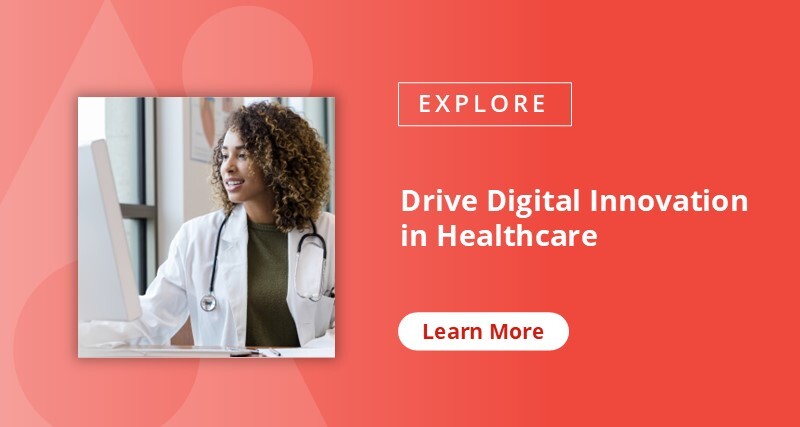Singapore's healthcare professionals are increasingly at risk of burnout, a concerning trend that mirrors global patterns but has specific local dimensions. Even after the COVID-19 pandemic, the challenges faced by healthcare workers are still manifest, highlighting the crucial need for a resilient, adaptable workforce.
Today, a substantial number of healthcare workers in Singapore still experience moderate to high levels of burnout, with junior doctors and nurses being particularly vulnerable, according to the 2024 study published in the Singapore Medical Journal. These individuals work up to 80 – 90 hours per week during peak periods, leading 45% of junior doctors to consider leaving the profession.
This challenge, compounded by increasing patient demands and understaffing, risks not only the wellbeing of healthcare workers but also the quality of patient care. The good news? Technology is here to help.
As the healthcare sector moves toward a more patient-centric model, technology solutions are playing a vital role in supporting the wellbeing of medical staff, improving efficiencies, and enabling sustainable workflows. In this blog, we’ll explore how technology can help prevent burnout in four key areas: communication, efficiency, learning, and support.
4 Ways Technology Can Address Burnout Among Healthcare Workers
The demands of modern healthcare systems – compounded by staffing shortages and administrative burdens – have created an unsustainable work environment for many. However, digital transformations in healthcare offer promising pathways to alleviate this crisis.
Here are some aspects where technologies can help improve efficiency in healthcare:
1. Communication: Breaking Down Silos and Reducing Frustration
Poor communication is one of the top stressors for healthcare workers. It leads to misunderstandings, delays, medical errors, and interpersonal friction — factors that directly affect morale and performance. Traditionally, fragmented communication across departments or outdated systems has created bottlenecks and added pressure to already overstretched teams.
Implementing a robust intranet system can significantly improve communication and collaboration among healthcare professionals. In healthcare settings, effective communication is crucial for ensuring patient safety, enhancing care quality, and maintaining operational efficiency. A well-designed intranet system serves as a centralised platform where healthcare workers can access and share information seamlessly, breaking down the traditional silos that often hinder communication across departments.
An excellent example of this is a Singapore hospital that used a mobile-ready intranet platform to facilitate real-time access to vital resources and information from anywhere, ensuring that healthcare professionals could quickly retrieve the information they needed to make informed decisions. Using customised web parts and streamlined workflows, the facility improved productivity and operational efficiency, allowing healthcare workers to focus more on patient care rather than administrative tasks.
2. Efficiency: Doing More With Less Without Burning Out
One of the most pressing causes of burnout is the unsustainable workload that healthcare workers face daily. When time is consumed by manual processes, administrative work, or inefficient scheduling, less energy is left for direct patient care. AI-powered solutions can significantly alleviate these burdens by streamlining workflows, centralising patient data, and delivering real-time insights to support proactive, personalised care. These capabilities are essential for monitoring, predicting, and responding to patient needs in a more coordinated and efficient manner especially in high-demand environments.
For instance, intelligent agents can automate routine administrative tasks such as patient scheduling, data entry, and resource allocation, freeing up valuable time for healthcare workers to focus on patient care delivery. Additionally, AI-driven predictive analytics can help in anticipating patient influx, optimising staffing levels, and ensuring that resources are allocated where they are needed most. This not only enhances operational efficiency but also reduces the stress and burnout associated with manual and repetitive tasks.
3. Learning: Empowering Through Growth and Confidence
Continuous learning is a key driver of job satisfaction, resilience, and professional confidence for healthcare workers. However, finding the time and energy to upskill during long shifts or between rotating rosters is a significant challenge.
Digital learning platforms offer access, flexibility, and a variety of educational resources and opportunities. These platforms can provide personalised learning pathways tailored to individual needs, ensuring that healthcare professionals receive relevant and effective training. In addition, integrated process advisory features empower managers and supervisors to identify individual training requirements by analysing performance and skills gaps. This allows for more targeted, actionable development plans that align with both personal growth and organisational objectives.
Meanwhile, mobile learning capabilities help healthcare staff to access educational content on-the-go, making it easier to fit learning into their busy schedules. Gamification elements further enhance the learning experience by making it more interactive and enjoyable.
4. Support: Building Connection and Emotional Resilience
Burnout isn't just about workload — it's also about emotional fatigue and isolation. Many healthcare professionals carry the psychological burden of patient care silently, without sufficient outlets for support. Like their patients, healthcare employees need and deserve quality care.
This presents a significant opportunity for healthcare organisations to build or integrate an emotional support platform that not only addresses the emotional challenges of burnout but also actively nurtures the wellbeing of staff. By leveraging technology, healthcare organisations can create tailored, easily accessible resources and tools that provide real-time support to their teams. These digital tools can also facilitate peer-to-peer connection, offering a safe space for healthcare workers to share experiences and provide mutual encouragement.
By integrating these support systems into the workplace, organisations can foster a more supportive and resilient work environment, ultimately enhancing the overall wellbeing of their staff and improving the quality of patient care.
Improve Healthcare Workers’ Wellbeing With AvePoint
The wellbeing of healthcare professionals is the cornerstone of effective healthcare delivery. However, the pressures and challenges of healthcare environments, including administrative overload and burnout, not only hinder staff productivity but also impact patient outcomes. To ensure the long-term sustainability of healthcare systems, it is crucial to implement strategic, technology-driven solutions that address these challenges holistically.
AvePoint understand the complexities of healthcare environments and the critical need to support both operational efficiency and workforce wellbeing. Our expertise lies in seamlessly integrating best-in-class technologies and platforms to help healthcare organisations address their unique challenges, reduce burnout, and enhance care delivery.
Our innovative solutions address key areas that drive positive change in the healthcare ecosystem:
Optimising collaboration and communication. Seamless collaboration across multidisciplinary healthcare teams is critical for effective care delivery. By leveraging industry-leading communication and data-sharing platforms, we help centralise information and ensure that teams have real-time access to patient data, leading to quicker decision-making and more coordinated care. This reduces inefficiencies, improves workflow, and allows healthcare workers to focus more on patient care.
Automating routine processes. Through our integration of AI-powered solutions, we automate routine tasks such as patient scheduling, data entry, and resource allocation, reducing the burden on staff. By enabling healthcare professionals to spend less time on manual tasks, we help them focus more on what matters most — delivering high-quality care.
Ensuring data security and compliance. In healthcare, data security is paramount. We ensure that any system integration adheres to the highest standards of security and compliance, safeguarding sensitive patient information and ensuring that healthcare providers can maintain trust while focusing on care delivery. AvePoint’s Confidence Platform adheres to international security frameworks to provide peace of mind and mitigate risk.
We invite you to explore how AvePoint can support your healthcare organisation in addressing workforce burnout and operational challenges.


